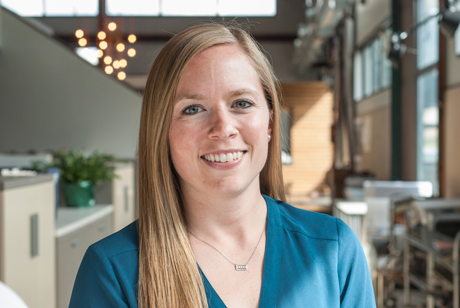By Julia Bailey, senior associate, OZ Architecture
As architects and designers, our goal is always to conceive the optimal vision for each project. But, as anyone who’s worked in this field for any length of time knows, this journey seldom follows a straightforward path from imagination to realization. The design process requires us to navigate within the confines of project parameters, including site specifics, project objectives, financial constraints and regulatory requirements.
However, if we are to continually elevate our designs and cater to the evolving needs of aging adults and our clients in this sector, it is essential that we periodically step outside of a project’s conventional boundaries and allow our teams to ideate with limitless thinking. In one such recent session, our team was challenged to redefine the design of units within seniors housing communities, drawing from the latest insights into how design influences health and well-being.
These discussions unfailingly uncover some exciting possibilities for practical application in the enhancement of seniors housing community designs. In our most recent session, several recurring themes emerged, including the significance of emphasizing natural light in unit design and layout; fostering intentional social connections through innovative unit and pod design; and providing intentional access to nature within living spaces.
Prioritize natural light
The design community increasingly recognizes the profound impact of natural light on human well-being. Research shows that exposure to natural light significantly influences perceptions of happiness or sadness within physical environments.
Architectural massing, which shapes the configuration of units within a building’s structure, can have a tremendous impact on the unit’s exposure to natural light.
Frequently, senior living units follow conventional layouts resembling hotel-style or studio accommodations, often limiting the natural light to a single wall with windows. Given regulatory requirements, especially those mandating windows in bedrooms, this design often results in fewer opportunities for natural light to reach interior living areas, where residents spend most of their waking hours.
A reimagining of unit layouts that prioritizes natural light, coupled with creative compliance with regulations, can lead to more functional and comfortable living spaces for aging adults. Prioritizing corner unit configurations within the massing, for example, can further facilitate the infusion of natural light from multiple angles, enhancing the resident experience and contributing to resident well-being.
By strategically repositioning certain aspects within the layout, such as moving the bathroom to the center of a studio unit, we can introduce glazing on walls or doors, allowing light to penetrate even deeper into the interiors.
Foster social connections
Unit design can subtly encourage stronger social connections in multiple ways, beginning with the entrance. Envisioning wider, light-filled hallways that mimic front porches, for example, can contribute to a more engaging social experience for residents while still providing them with the comfort of choice.
By taking that concept a step further and transforming corridors into a series of front stoops capable of accommodating seating and personalization, we can offer residents the opportunity to meaningfully interact with their neighbors while also enhancing the residents’ ability to customize and differentiate their home.
To further enhance the neighborhood feel, unit designs could be offset to avoid direct views of neighbors’ front porches and doors. Instead, units could open onto an art piece in the hallway, for instance, enhancing a sense of privacy for residents.
Another approach might involve positioning a small number of pod units around common social areas. For example, four studio-sized units could surround a spacious living room, where residents enter and exit through the shared amenity space. This arrangement inherently encourages interactions between residents and can lead to positive outcomes and social connectedness, particularly for those who thrive in smaller social settings.
By designing spaces that seamlessly integrate social interaction into daily routines, communities can provide a more connected and fulfilling environment, promoting healthier aging and an improved quality of life for residents.
Provide access to the outdoors
Amenities play a pivotal role in residential communities, especially in seniors housing communities, where they greatly influence residents’ quality of life. Access to the outdoors is as crucial as natural light within interiors in promoting overall physical and mental well-being.
The prevailing assumption in seniors housing design is that balconies are not suitable for aging adults due to safety concerns. Nevertheless, we believe there are multiple ways to provide direct outdoor access from units while ensuring safety, depending on the community’s level of acuity and function.
For residents with greater independence, enclosed patios within an interior courtyard structure and higher-level balconies can be excellent options. These spaces provide a sense of security while granting autonomy for residents to connect with nature in their own personal space. Features like sliding glass doors or screens can be incorporated to facilitate fresh air and sunlight while preserving privacy.
As acuity levels increase, there is still potential to incorporate Juliet balconies. These smaller balconies offer partial openings with safety railings, allowing wheelchair-bound residents to enjoy fresh air.
By orienting units, patios and balconies toward an activated interior courtyard, residents can engage with the outdoors at their comfort level. Seeing an open-air concert from their balcony, for example, enables residents to choose whether to partake from their own space or join their neighbors in the courtyard.
As the 65-and-older population of the United States is projected to nearly double by 2060, there exists an immense opportunity for operators and design professionals to revolutionize seniors housing. By embarking on this journey with an open mind and a readiness to challenge outdated perceptions, we can create vibrant, sociable, healthy and well-designed communities that enable residents to live better and longer lives.

